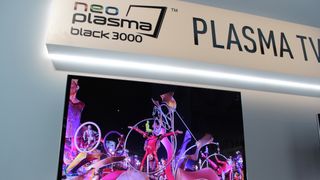Bye bye plasma: is this the end for the original flat TV tech?
Should we mourn its passing?
The arguments for and against LCD and plasma are long rehearsed, but why is plasma losing to LCD? I don't buy the brightness argument. If you live in a greenhouse and only watch TV during the day then, yes, the brighter LCD TVs are perhaps more punchy, more versatile. Dim the lights, though, and doesn't the blue-ish tinge to LCD TVs get annoying? How about the smudgy, blurry picture when the camera pans quickly?
Illusion of progress
So why did LCD triumph? Once the major brands had decided on LCD, it's been largely about marketing and the illusion of progress. We've often heard bad language aimed at plasma technology, usually without much basis; 'screen burn' or the softer-sounding version, 'image retention', is a common accusation, though it's not something that affects modern plasmas. And nor do you have to 'replace the plasma gas every year', as one TV salesman once told me.
There's absolutely no doubt that bigscreen LCD TVs have got better – much better – in the past five years. We've seen innovations like super-slimness, 100Hz, 200Hz, and probably the clincher, LED backlighting, lauded on posters, TV adverts and in shops. Plasma, meanwhile, has merely managed to get a little bit thinner with each passing year.
However, LCD tech's gradual progress hides the fact that plasma has for years been able to show fast motion without losing resolution, and show realistic inky blackness; it's had to need for 100Hz. A moving image on a HD-ready telly like the Panasonic TX-P42X50B plasma is more consistently detailed than any LCD TV, and the truth is that all innovations to LCD TV tech has been with one aim; to create a picture quality that's as good as plasma.

A bit of a pointless process, but that process has almost concluded – which is why we shouldn't mourn for too long if plasma is in its death throes, though there is some hope for the original flatscreen TV tech. LG and Samsung both still manufacturer plasmas in South Korea, and examples like the Samsung 51F8500 show that innovation continues. Meanwhile, LG sells its 50-inch 50PM670T plasma for under £600 while LCD-flavoured models go for twice as much.
For the mass-market, which long ago chose the slimmer, pricier LCD models over plasma, there's no going back, but we hope plasma remains at least an option for those of us who think that a TV should be judged on picture quality, not how thin it is.
Five years ago a stunning 47 per cent of British men said that said they'd give up sex for six months in exchange for a 50-inch plasma TV. What's the betting that most settled for an LCD TV?
Get daily insight, inspiration and deals in your inbox
Get the hottest deals available in your inbox plus news, reviews, opinion, analysis and more from the TechRadar team.
Jamie is a freelance tech, travel and space journalist based in the UK. He’s been writing regularly for Techradar since it was launched in 2008 and also writes regularly for Forbes, The Telegraph, the South China Morning Post, Sky & Telescope and the Sky At Night magazine as well as other Future titles T3, Digital Camera World, All About Space and Space.com. He also edits two of his own websites, TravGear.com and WhenIsTheNextEclipse.com that reflect his obsession with travel gear and solar eclipse travel. He is the author of A Stargazing Program For Beginners (Springer, 2015),

